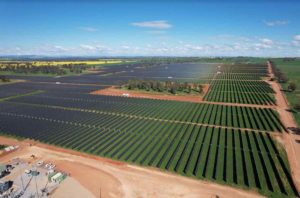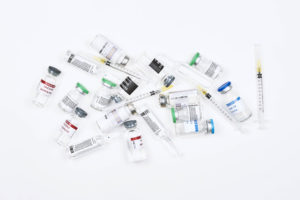For the climate community, observing U.S. national political leaders’ responses to the coronavirus pandemic has been like watching the climate crisis unfold on fast-forward. Many – particularly on the political right – have progressed through the same five stages of science denial in the face of both threats.
For climate change, the denial process began decades ago. NASA climate scientist James Hansen testified to Congress in 1988 about the dangers posed by global warming; the fossil fuel industry formed the Global Climate Coalition the very next year to launch a campaign casting doubt on mainstream climate science.
In November 1989, President George H.W. Bush’s chief of staff, climate denier John Sununu, sabotaged efforts to develop the first international climate change treaty. Exxon in particular spent the following decades and tens of millions of dollars funding a network of think tanks to propagate climate science denial.
In a memo leaked in 2003, Republican strategist Frank Luntz advised G.O.P. politicians, “You need to continue to make the lack of scientific certainty a primary issue in the debate.”
Analysis
The same denial process has unfolded with coronavirus, but over a far more compressed time frame. In both crises, early warnings from scientific experts went unheeded and were often discouraged or suppressed.
As a result, the American government began responding only after each threat’s impacts had become widespread and undeniable. At that point, due to the missed opportunity to prevent the outbreak of impacts, much of the response came in the form of damage control.
America’s efforts to “flatten the curve” of coronavirus cases, like its efforts to bend the carbon emissions curve, were deployed too slowly.
The five stages of denial
In 2013, as the fifth Intergovernmental Panel on Climate Change report was due to be released, the five stages of climate denial were on display in many conservative media outlets. Watching the reactions to the unfolding coronavirus crisis in early 2020 created a sense of déjà vu, as many leaders exhibited the same stages of denial.
In fact, many of the same actors who deny the climate crisis also were (or still are) denying coronavirus threats. Some observers have remarked that the Venn diagram of coronavirus and climate deniers is nearly a circle.
Stage 1: Deny the problem exists.
This is denial at its most basic, as there is no need to solve a problem that doesn’t exist. If the issue is a hoax, as the president repeatedly has asserted about both global warming and coronavirus, the status quo can be maintained.
But denying a problem doesn’t change its physical or epidemiological properties, so in the face of real scientifically quantified threats, Stage 1 denial cannot last very long.
Stage 2: Deny responsibility. Upon accepting the threat posed by coronavirus outbreaks, numerous conservative politicians and pundits have tried to shift the blame to China, with many including the president labeling it “the Chinese virus,” echoed over 100 times on Fox News.
Similarly, after accepting that climate change is happening, many have tried to blame it on natural cycles, or, if they accept humanity’s responsibility, to likewise blame it on China. But here again denial falls short; shifting blame does not slow a physical or viral crisis.
Stage 3: Downplay the threat.
President Trump spent weeks downplaying the threat of coronavirus, early maintaining that it had only infected one person in America, that “one day like a miracle it will disappear,” that “within a couple of days [the number of infected Americans] is going to be down to close to zero,” and so on.
Fox News and other conservative media outlets followed his lead in downplaying the risks. Similarly, Trump has said the climate “will change back,” and conservative media outlets have spent decades arguing that climate change is no big deal.
Yet, as the devastation of coronavirus and climate change impacts has become a reality, doubters have been increasingly forced to move beyond Stage 3 denial.
Stage 4: Attack the solutions as too costly.
Trump has claimed that coronavirus curve-flattening measures recommended by experts – like long-term social distancing – are too costly.
He instead suggested preemptively loosening social distancing measures to reopen the national economy “sooner rather than later” (an approach Fox News has also championed), as well as various unproven drug treatments, with Fox News again following suit.
A number of ideologues have arguedthat older Americans would rather die than cause the economic disruption associated with extended social distancing.
Some partisan policymakers and pundits similarly oppose virtually all large-scale climate solutions as too expensive, instead proposing worthwhile but inadequate steps like simply planting trees or capturing carbon from power plants to inexplicably use for extracting yet more fossil fuels.
Stage 5: It’s too late.
Some have proposed, once it became obvious that the coronavirus outbreak had become widespread, that governments should just maintain the status quo, try to build herd immunity, and cope with the consequences (such as overwhelmed health care systems that could result in millions of deaths).
Climate justice essayist Mary Heglar coined the term “de-nihilist” to describe those who have similarly succumbed to the fear that it’s too late to stop climate change. Such attitudes only hamper efforts to constructively address both problems.
Coronavirus is a learning opportunity for climate change
Because American leadership proceeded through these stages of denial, it wasted valuable months that could have been spent preparing for and curbing the spread of coronavirus. For comparison, South Korea diagnosed its first case of COVID-19 on January 20 – the same day as the U.S. – but almost immediately launched an aggressive program of testing, tracing, and quarantining.
By March, South Korea was conducting over 10,000 coronavirus tests per day, and its new cases fell below 150 per day by mid-March.
Despite a population six times larger, the U.S. had reached the threshold of 10,000 new tests per day only on March 16, and has consistently lagged in testing on a per capita basis.
As testing in the U.S. finally began to catch up to the viral spread, the number of new coronavirus cases in America accelerated past 10,000 per day by March 23, reaching 580,000, by April 14 compared to 10,564 South Korean cases (222 deaths) as of that date.
After this late start, Trump has regularly argued that the U.S. “cannot let the cure be worse than the problem itself.”
Those who oppose climate solutions similarly argue that making investments to bend the carbon emissions curve would be worse than the consequences of climate change – consequences that include increased food insecurity; intensified hurricanes, wildfires, heatwaves, droughts, and floods; and more species extinctions, violent conflicts, and death.
Both arguments run counter to expert advice, misunderstand the problem, and present a false choice.
In reality, failing to make the necessary early investments to head off each threat will result in economy-crippling consequences, whether in the form of overwhelmed health care systems in the case of coronavirus or more deadly extreme weather events in the case of climate change.
Experts agree that to protect both the economy and public health, government responses must focus on flattening the coronavirus curve and making investments to rapidly curb carbon pollution.
In fact, a new study on the 1918 flu pandemic found that measures like social distancing “not only lower mortality, they also mitigate the adverse economic consequences of a pandemic.” Nipping the problem quickly and aggressively yields the best outcome for both the economy and public health.
Put simply, suffering and death are costly.
Observing the damage resulting from denial of both the coronavirus and climate crises raises the question, how did humans evolve this apparent psychological flaw?
Physician-scientist Ajit Varki has hypothesized that comprehending one’s own mortality is a psychological evolutionary barrier for most species, because this realization would amplify the fear of death and thus “would have then reduced the reproductive fitness of such isolated individuals.”
Varki posits that humans may have overcome this barrier by developing denial as a coping mechanism, but that “If this theory turns out to be the correct explanation for the origin of the species, it might ironically also be now sowing the seeds of our demise,” since denial now obstructs efforts to address threats like climate change and coronavirus.
As climate activist and author Bill McKibben put it, “You can’t negotiate with physics and chemistry, you can’t compromise with them or spin them away … coronavirus is teaching us precisely this lesson about biology as well. Reality is real and sometimes it bites pretty hard.”
Or, as Republican pollster Neil Newhouse said more bluntly, “Denial is not likely to be a successful strategy for survival.”
But because of its compressed time frame, coronavirus has provided humanity an opportunity to learn this lesson and apply it to curbing the worst of the climate crisis. Contrary to Stage 5 denial, it’s not yet too late to avoid the most severe climate change impacts.
This article was originally published on Yale Climate Connections. Reproduced with permission.










